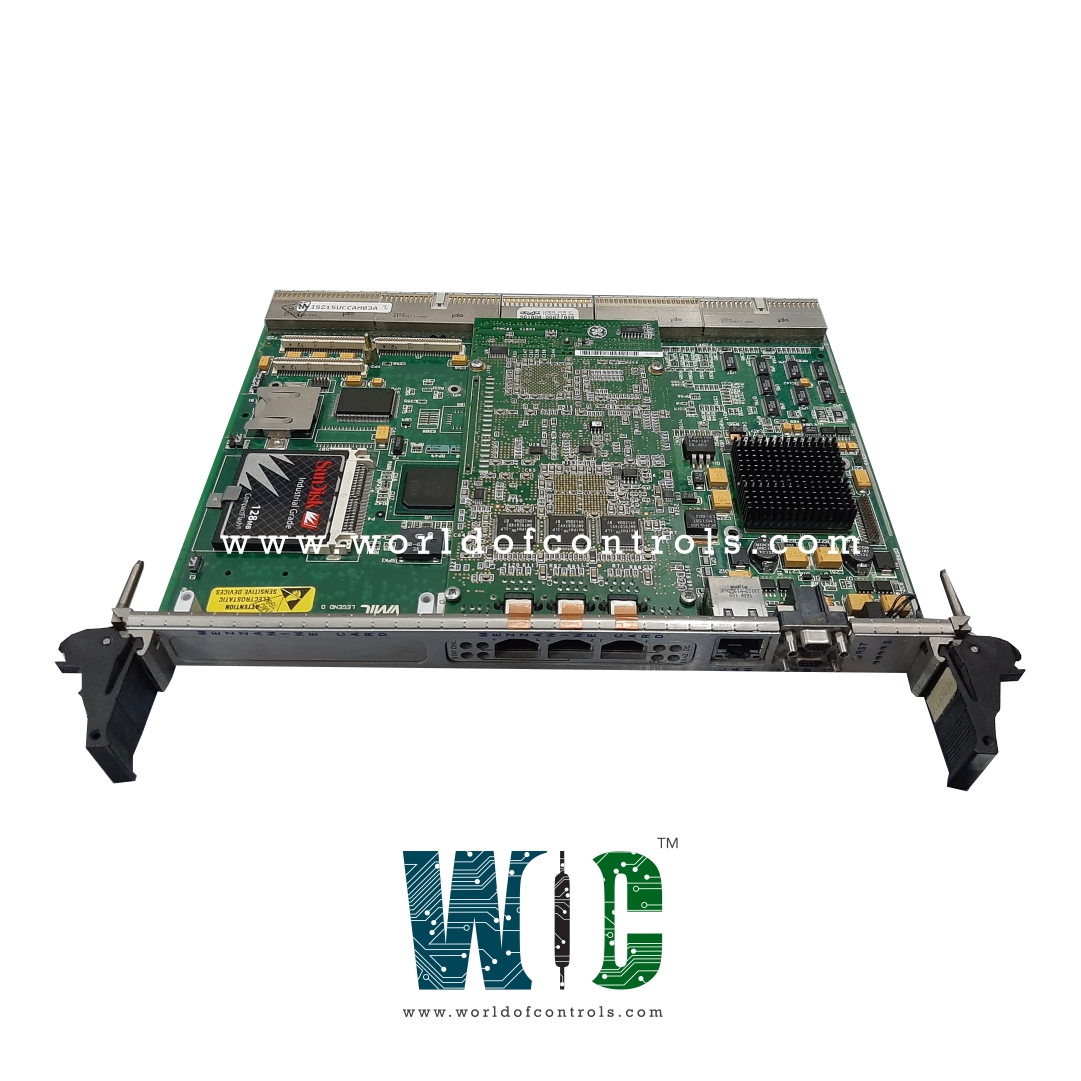SPECIFICATIONS
Part Number: IS215UCCAM03
Manufacturer: General Electric
Series: Mark VIe
Product Type: CPCI controller
Repair: 3-5 days
Availability: In Stock
Country of Manufacturer: United States (USA)
Functional Description
IS215UCCAM03 is a CPCI controller developed by General Electric. These single-board module controllers offer versatile solutions for diverse applications. While the UCCAM03 provides a solid foundation with its 650 MHz Celeron processor, the UCCCM04 steps up with a more potent 1.6 GHz Pentium M processor and enhanced memory resources. The inclusion of an EPMC PCI Mezzanine Card further extends the capabilities of the UCCCM04, making it suitable for a wide range of industrial and data-centric applications. Whether it's for basic control or more demanding data processing, these controllers are engineered to deliver reliable performance.
Baseboard Components
- Processor: UCCAM03 is equipped with a 650 MHz Celeron processor. This processor forms the computational heart of the controller, providing the necessary computing power for various applications.
- Memory: It features 128 MB flash memory and 128 MB DRAM, ensuring that applications can be stored and executed efficiently.
- Serial Ports: Two serial ports enable data communication and connectivity with external devices.
- Ethernet Interface: A single 10/100 Megabits Ethernet interface is integrated into the baseboard, facilitating network connectivity.
EPMC Attachment
- The CPCI controllers also incorporate an EPMC PCI Mezzanine Card attached to the baseboard. The EPMC extends the functionality of the controllers with the following components:
- Flash Backed NVRAM: The EPMC contains 32 kB of Flash Backed Non-volatile RAM (NVRAM), which is crucial for data retention and recovery in case of power loss or system failures.
- Ethernet Connectivity: Three additional 10/100 Megabits Ethernet ports on the EPMC are designed for IONet connections, allowing for expanded networking and data exchange capabilities.
- Temperature Sensors: The EPMC incorporates temperature sensors to monitor and detect fan loss, which is vital for ensuring proper cooling and system operation.
- Precision Time Synchronization: The EPMC is equipped with Ethernet Physical Layer snoop hardware, enhancing precision time synchronization, a critical feature in applications where timing accuracy is essential.
UCCA Boards in the CPCI Rack
- Power-Only Usage: UCCx boards utilize the CPCI backplane exclusively for power distribution. This means that the CPCI rack can accommodate a maximum of four UCCx boards, but no backplane communication path is established between them. Instead, these boards typically communicate through alternate means, such as the Universal Data Highway (UDH) network.
- Optional CDH for Controller Communication: In the context of the UCCx boards, multiple controllers within a rack can establish communication through the UDH network. However, with the UCCC (Universal Control Communication Card), an optional Control Data Highway (CDH) can be employed for enhanced communication capabilities between controllers.
Components of a CPCI Enclosure
- Rack Configuration: A typical CPCI enclosure consists of a 6U high rack, one or two 3U high power supplies, a 6U high single board (controller), and a cooling fan. This configuration is engineered to provide an integrated and efficient platform for embedded computing applications.
- CPCI Rack Backplane: While the rack backplane is CPCI compliant, it serves a specific purpose in the UCCx board setup. Its primary function is to supply power from the power supply units to the controller and cooling fan. Data communication pathways are not a part of its role in this context.
Power Supply Mechanisms
- Bulk Power Conversion: The CPCI power supply units play a pivotal role in the system by converting bulk incoming power into several essential voltage levels. These power supply units create ±12 V dc, 5 V dc, and 3.3 V dc from the incoming power source.
- Power Distribution: The voltage levels generated by the power supply are then distributed to the controller(s) and the cooling fan through the CPCI backplane. This simplifies power distribution within the enclosure and minimizes the need for complex cabling.
Redundancy and Hot Swap Compatibility
- The power supply units are designed to offer redundancy, enhancing system reliability. In the event of a power supply failure, a secondary unit can seamlessly take over. Moreover, these power supplies adhere to CPCI hot swap compliance, meaning that they can be replaced without disrupting the operation of the entire system. They are typically equipped with the standard CPCI 47-pin connector.
- Power Supply Redundancy: An optional rack configuration may include two power supply units to provide redundancy. This redundancy ensures that the system remains operational even if one power supply unit encounters a failure.
WOC has the largest stock of Speedtronic control spares. Please contact our staff by phone or email for pricing and availability on any parts and repairs
FREQUENTLY ASKED QUESTIONS
What is IS215UCCAM03?
It is a CPCI controller developed by General Electrics.
How do power supply units in a CPCI system contribute to the overall functionality?
The power supply units in a system are responsible for converting bulk incoming power into various voltage levels (±12 V dc, 5 V dc, and 3.3 V dc). These voltage levels are crucial for powering the controllers and cooling fans, and they are distributed through the CPCI backplane.
What is the significance of power supply redundancy in a system?
Power supply redundancy is essential for ensuring system reliability. In the event of a power supply unit failure, a secondary unit can take over, preventing system downtime and data loss.
Can power supply units be replaced without interrupting the operation?
Yes, power supply units are typically CPCI hot swap compliant, which means they can be replaced without disrupting the operation of the entire system. This feature enhances maintainability and minimizes downtime during maintenance activities.
What is the standard connector used for power supply units?
Power supply units often use the standard 47-pin connector for power distribution and connection to the backplane.
